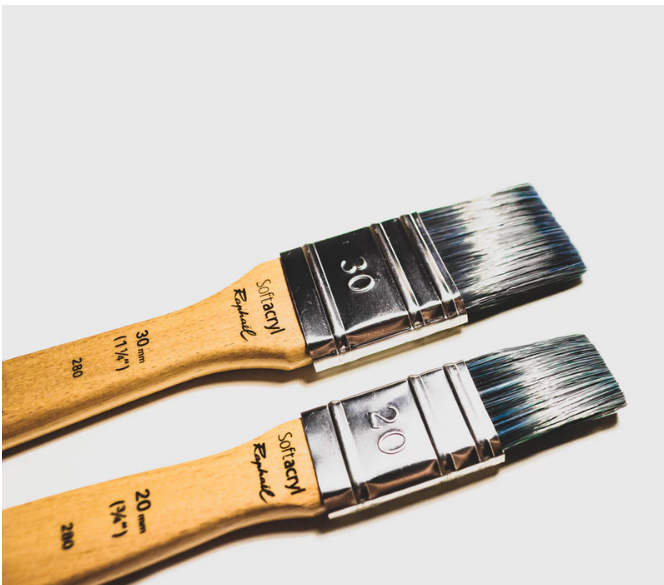Choosing Between Water Or Oil-Based Paints

If you are planning to paint your Macomb County home, you will need to make a lot of decisions before you commence the painting process. One of the decisions that you need to make is whether to use water or oil-based paints. This article will guide you on how to make the right choice when it comes to paint types. First, you have to examine what you plan to paint. Determine whether it is plaster, wood, metal, drywall or plaster. Painting a drywall is different from using a top coat over the existing paint. You can go from light to dark, paint high traffic areas or mask your handprints like banisters which require different products and approaches.
If you are not sure, you really shouldn’t guess. Arm yourself with the knowledge on paint coats and match the paint to your project to get the lasting finish you need. Below are factors to consider when choosing the right paint.
Color
A pigment is a color and it hides or covers surfaces. All colors are made from base pigments like umber, Sienna, zinc oxide and titanium oxide. The pigments are first ground into particles before stirring into the paint. Each pigment is particulate and can sit for a while.
Ability to spread
A solvent is the right term for a spreading agent. Sometime back, water, wax and lime mixture was the dominant solvents in paint making. Nowadays, water makes the water-based paints while petroleum is the solvent for oil-based paints.
A solvent is also known as a medium, thinning agent or carrier. Other ingredients suspend in the liquid base which thins the mixture of colors and allows it to settle and spread evenly.
Adhesion
Paint is not good if it cannot stick or maintain a uniform appearance. The binder joins the particles of the pigment and gives the paint the sticking power. Once the paint dries, it gives a protective finish. Water-based paints use plastic binders which is either vinyl or acrylic or just a combination of both.
Oil-based paints use a synthetic resin or natural oil as a binder. Paint is named for the kind of binder it uses. For examples, latex paint refers to water-based paints while Alkyd paint refers to oil-based paint.
What should you go for oil-based or water-based
An oil-based paint coat takes longer to dry than water-based paint. Professional Macomb County Michigan painters prefer oil-based paints because of this feature. A paint that takes longer to dry flattens out better to hide all the brush marks. The odor is strong, but an oil-based paint is durable and hard to beat.
Use oil-based paint to prime woodwork, metals, walls and painted surfaces. Cleaning up this paint than water-based is tricky. To clean up oil-based paint, you need turpentine or mineral spirits.
Exterior and interior walls are ideal surfaces for oil-based paints. The paint is a good stain killer and prevents stains from being visible through the new paint coat. You can use the paint to block stains on the walls from nicotine, ink, and water.
You can use the paint to seal porous wood surfaces and stop tannin released by the wood like redwood or cedar. Oil-base paint slows down blistering, peeling and cracking.
The only downside of using this paint is that it dries slowly and releases volatile organic compounds which can cause harm in prolonged exposure to high concentrations. Besides, oil-based paint requires harsh solvents and thinners to clean your applicators and brushes. You have to dispose of it carefully and properly. However, the paint should never be used on masonry.
Water based paint
Dries rapidly and you can easily apply two coats in one day. The paint is easy to clean up with just water and soap. Unlike oil-based paints, it has less odor even as it dries. It is ideal for prepping unfinished drywall in readiness for painting.
The paint is less brittle and less susceptible to cracking or peeling. You can prime softwood, brick, galvanized metals and concrete. The paint comes in a low non-volatile formula which makes it a healthy alternative to oil-based paint.
The shininess of the finish depends on the amount of binder in the paint. Finish choices can range from high-gloss to flat. Flat finishes hide imperfections and are dull. High gloss draws attention while giving off a brilliant shine. In between high gloss and flat finishes, lies satin, soft-gloss, eggshell, low luster and semi-gloss. Paint finishes differ from brand to brand. Therefore, it is important to ask to check the finish when shopping for paint.
A paint primer acts as insurance. It seals the surfaces and leaves a solid base in preparation for the paint job. Primers can be used to cover darker shades and to hide imperfections. It is important to check if the primer covers the surface you want to cover. Otherwise, painting is the easiest, most affordable and quickest way to transform your home interior and exterior appearance.
